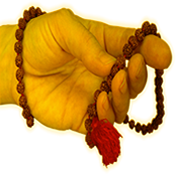
The sacred Vedic texts and other Hindu religious epics are the basis of the Hindu religion. They dictate on the spiritual and religious obligations of Hindu followers. While the center of Hindu religious fervor is the family, it is the sacred scriptures that shape the lives and destiny of Hindu families. Respect for family and ancestors is a pillar of Hinduism.
Most of these rituals are aimed to ease the journey of the Hindu soul towards final salvation after a series of deaths and rebirths. Some of these Hindu rituals and ceremonies are to usher in blessings of happiness and good fortune on the living family after appeasing the souls of ancestors and the gods. The Hindu way of life covers concepts of life and the afterlife in one continuous and seamless process.
During the Hindu’s lifetime, there are many rituals and ceremonies that they have to perform as religious obligations prescribed in the Vedic texts and other religious scriptures and epics. One of these mandatory rituals is the Pind Daan. Along with Asthi Visarjan or the immersion of the dearly departed’s ashen remains in the holy waters of the sacred Ganges River in Varanasi in northern India,
Pind Daan is also a ritual performed for the dead. Like Asthi Visarjan, Pind Daan is also aimed to give relief to the departed soul as it journeys towards its next destination within the complete evolutionary process. The ritual helps the soul cut its ties and attachments with the material human body because holding back on this detachment causes the soul a lot of pain. Pind Daan is performed to let the soul move forward into peace.
ind Daan involves the giving of daan through pinds, as well as the conduct of poojas, along the banks of the sacred Ganges River in Varanasi. The Hindus believe that the holy river Ganga purifies the departed soul so that it can ultimately attain salvation. Pind Daan helps in the process of achieving mukti or final emancipation from the Hindu cycle of deaths and rebirths.
